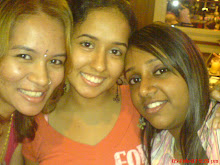CONCORDANCE
This week we were required to work in pairs on the topic “ concordance”. My partner Faezah and I, read and later on discussed about the article “ Beyond Concordance Lines: Using Concordance To Investigate Language Development” by Arshad Abd. Samad of University Putra Malaysia (OTL -Pg 70)
The general idea that this article stated was regarding the EMAS corpus by researchers from University Putra Malaysia (UPM). The corpus was compiled in the year 2002 and it is an unedited corpus that contains written data in the form of 3 essays written by 800 students from 3 different educational levels which are Primary 5, Form 1 and Form 4 students. The main purpose of this article is to present the relevance of corpus data in investigating language development without having to analyze concordance lines.
Through this article it is obvious that different ages have different types of writing. In this article, the writter has differentiated all 3 groups of students writing into 3 main aspects. The first aspect is the language productivity. In this context, language productivity is defined as to how many sentences and words each group of students have used in their essays. Thus the results showed that there was an increase on the amount of words and sentences used by each level as they became older. This was probably due to the fact that as students become older they become more matured hence providing them the ability to expand ideas and thoughts.
The second aspect taken under study was the range of vocabulary by these 3 different educational levels, and yet again it showed an increase from the Primary 5 students till the Form 4 ones. It showed that the Primary 5 students used a common group of words proving that their vocabulary was narrow compared to the Form 1 and Form 4 students. This could also be due to the topic given because the Primary 5 students got a essay topic based on a few pictures given.
The last aspect was the sophistication of vocabulary used by all 3 levels. In this case. The Form 4 students had a wider range of vocabulary, the Form 1 students had an average level of vocabulary and the Primary 5 students had a common vocabulary.
To conclude, Corpus data can be analyzed to inform language educators on the language development besides improving language production as well as vocabulary range and sophistication.
The general idea that this article stated was regarding the EMAS corpus by researchers from University Putra Malaysia (UPM). The corpus was compiled in the year 2002 and it is an unedited corpus that contains written data in the form of 3 essays written by 800 students from 3 different educational levels which are Primary 5, Form 1 and Form 4 students. The main purpose of this article is to present the relevance of corpus data in investigating language development without having to analyze concordance lines.
Through this article it is obvious that different ages have different types of writing. In this article, the writter has differentiated all 3 groups of students writing into 3 main aspects. The first aspect is the language productivity. In this context, language productivity is defined as to how many sentences and words each group of students have used in their essays. Thus the results showed that there was an increase on the amount of words and sentences used by each level as they became older. This was probably due to the fact that as students become older they become more matured hence providing them the ability to expand ideas and thoughts.
The second aspect taken under study was the range of vocabulary by these 3 different educational levels, and yet again it showed an increase from the Primary 5 students till the Form 4 ones. It showed that the Primary 5 students used a common group of words proving that their vocabulary was narrow compared to the Form 1 and Form 4 students. This could also be due to the topic given because the Primary 5 students got a essay topic based on a few pictures given.
The last aspect was the sophistication of vocabulary used by all 3 levels. In this case. The Form 4 students had a wider range of vocabulary, the Form 1 students had an average level of vocabulary and the Primary 5 students had a common vocabulary.
To conclude, Corpus data can be analyzed to inform language educators on the language development besides improving language production as well as vocabulary range and sophistication.
------------------------------------------------------------------------------------------------
Article on the application of concordance.
The article on the application of concordance that Faezah and me picked is from www.bu.edu/celop/mll/tutorials/pdf-public/concordance.pdf . This is an article by John De Szendeffy. In this article the writer talks about what is concordance and how to use it. The writer also gave examples and web sites where concordance software’s can be downloaded. Moreover, there are also activities in this particular article.
Another article that we read can be found at www.calico.org/p-180-Concordance%20(62001).html . This is a article cum advertisement as the user wrote his feedback on the concordance software he used. He explained the features of this concordance program as below:
- What the program does:Here are some other features of this program (as noted in its documentation)
- Lets you browse through the original text and click on any word to see the concordance for that word
- Lets you edit and re-arrange a wordlist by drag and drop
- Lets you see the collocation counts for every word, up to four words left and right
- You can make wordlists containing all the words in a given text and sort these words in many different ways. Each word can be optionally accompanied by a count of the number of times it occurs, and by a note of the percentage of all words which it represents.
- You can make concordances - wordlists where each occurrence of each word is shown in an extract from the original text which includes the word. Contexts can be selected and arranged in many different ways.
- The program can make complete concordances to all the words in your text or concordance selected words of your choice.
- It can handle large texts and has very few intrinsic limits on their size. The size of input texts is limited only by the amount of available disk space on your computer and, to some extent, by the amount of free memory (RAM).
- While viewing the results, you can select the words you want to keep in your wordlist or concordance using powerful selection criteria.
- You can browse the wordlist, the concordance, and your original text at will, and all three are interlinked so that you can jump immediately to any item of interest.
- You can print the concordance, having selected which elements you want to appear in the printed version. There is good control over page layout and fonts, and there is a powerful print preview.
- You can save the concordance as a plain text file suitable for further editing, or as an HTML file for use with a web browser.
- Finally, you can turn your concordance into a Web Concordance - a series of files which are ready for deployment on the web and represent a wordlist, a concordance, and a source text hypertextually linked.
-------------------------------------------------------------------------------------------------
Example of the applications of Concordance in translation.
The example of the application of concordance in translation can be found at http://www.ict4lt.org/en/en-mod2-4.htm%20under%20citation%201.3- under citation 1.3. A Parallel Concordance. In this example, the writer used the concordance application in translating French to English. The writer did a direct translation in order to show the exact use of concordance when it comes to translation.




0 comments:
Post a Comment